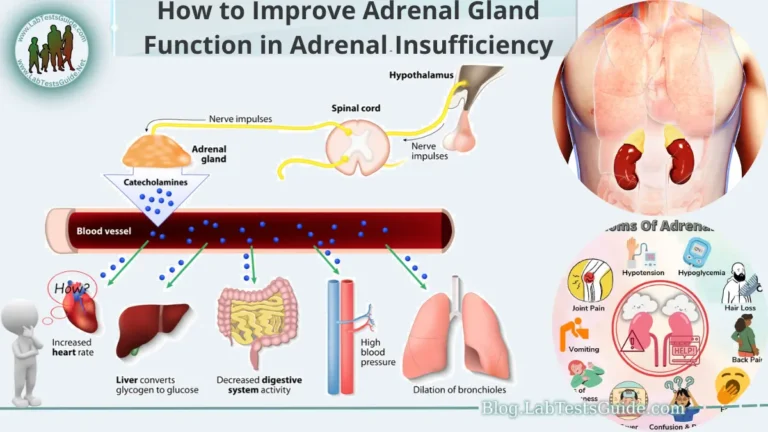Diaper rash is a common skin condition that affects infants and is characterized by redness, irritation, and discomfort in the diaper area. It occurs due to a combination of factors such as prolonged exposure to wet or soiled diapers, friction, sensitivity to diaper materials, and even infections. The delicate skin of infants is more susceptible to irritation, making it essential to prevent and manage diaper rash effectively.

Preventing diaper rash involves maintaining good hygiene practices, such as regular diaper changes to keep the skin dry and clean. Gentle cleaning techniques using mild cleansers and avoiding harsh products can also help prevent irritation. Ensuring a proper diaper fit that allows air circulation and avoids excessive friction is crucial. Additionally, using protective barriers like diaper creams or ointments can create a barrier between the skin and moisture, reducing the risk of diaper rash. By implementing these preventive measures, parents and caregivers can minimize the occurrence of diaper rash and promote the overall comfort and well-being of the infant.
What is Diaper Rash in Infants?
Diaper rash in infants is a prevalent skin condition that manifests as redness, irritation, and inflammation in the diaper area. It primarily affects babies and is characterized by the following features.
- Redness and inflammation: The affected skin appears red, and there may be varying degrees of inflammation and swelling in the diaper region.
- Irritation and discomfort: Diaper rash can cause discomfort, itching, and pain for the infant, leading to fussiness and irritability.
- Causes of diaper rash: Diaper rash can occur due to several factors, including prolonged exposure to wet or soiled diapers, friction or rubbing against the skin, sensitivity to diaper materials or detergents, and even fungal or bacterial infections.
- Delicate skin susceptibility: Infants have delicate and sensitive skin, which is more prone to developing diaper rash. Their skin is thinner, less mature, and more susceptible to irritation, making proper prevention and management crucial.
- Impact of moisture and acidity: The moist environment inside the diaper, combined with urine and stool, creates an ideal breeding ground for irritation and the growth of microorganisms, leading to diaper rash.
How to Prevent and Manage Diaper Rash in Infants:
Here are some essential steps.
- Regular diaper changes: Frequently change your baby’s diaper to prevent prolonged exposure to moisture and irritants. Aim for at least every two to three hours or as soon as the diaper is wet or soiled.
- Gentle cleaning techniques: Use mild, fragrance-free wipes or a soft cloth with warm water to clean your baby’s diaper area during diaper changes. Avoid using harsh soaps or wipes containing alcohol or fragrances, as they can further irritate the skin.
- Proper diaper fit: Ensure that the diaper fits your baby properly. A loose diaper can lead to friction and rubbing, while a too-tight diaper can restrict airflow. Choose diapers with adjustable tabs and elastic waistbands for a snug yet comfortable fit.
- Avoidance of irritants: Minimize exposure to potential irritants such as perfumed products, harsh detergents, and fabric softeners. Opt for hypoallergenic diapers, wipes, and laundry detergents specifically designed for sensitive baby skin.
- Use of protective barriers: Apply a thin layer of diaper rash cream or ointment containing zinc oxide or petroleum jelly to create a protective barrier between the skin and moisture. This helps to prevent and soothe diaper rash.
- Frequent diaper changes: Change your baby’s diaper promptly after bowel movements to minimize contact with stool, which can be particularly irritating to the skin.
- Gentle cleaning and drying: During diaper changes, gently clean the diaper area and pat it dry with a soft towel or allow it to air dry. Avoid rubbing the skin, as this can cause further irritation.
- Diaper-free time: Give your baby some diaper-free time to allow the skin to breathe and stay dry. Place a waterproof mat or towel underneath to catch any accidents.
- Avoidance of harsh products: Avoid using talcum powder, as it can be inhaled by infants and cause respiratory issues. Stick to gentle, baby-safe products recommended for diaper area care.
- Seeking medical advice: If diaper rash persists or worsens despite home care, or if your baby develops signs of infection such as increased redness, swelling, or pus-filled blisters, consult a healthcare professional for further evaluation and treatment.
Causes of diaper rash:
Here are some common factors that contribute to the development of diaper rash.
- Prolonged exposure to wet or soiled diapers: When a baby’s diaper is left unchanged for an extended period, the skin remains in contact with moisture, increasing the likelihood of developing diaper rash.
- Friction and chafing: The constant rubbing of the diaper against the baby’s skin can cause irritation and lead to diaper rash. This friction is often more pronounced when diapers are too tight or made of rough materials.
- Sensitivity to diaper materials: Some babies may have sensitivities or allergies to certain diaper materials, including the materials used in the diaper itself or the elastic, adhesives, or dyes used in its construction.
- Moisture and high humidity: The warm and moist environment inside a diaper provides an ideal breeding ground for the growth of bacteria and fungi, which can contribute to diaper rash.
- Introduction of new foods or medications: Changes in a baby’s diet or the introduction of new foods can sometimes result in more acidic urine or stool, which can irritate the skin and lead to diaper rash. Similarly, certain medications, such as antibiotics, may increase the likelihood of diaper rash by disrupting the balance of the skin’s natural flora.
- Bacterial or yeast infections: Diaper rash can be caused or exacerbated by bacterial or yeast infections. Candida (yeast) infections are particularly common and can thrive in the warm and moist environment of a diaper.
Prevention of Diaper Rash:
Here are some effective strategies to help prevent diaper rash.
- Regular diaper changes: Frequently change your baby’s diaper to minimize prolonged exposure to wetness and irritants. Aim for a diaper change every two to three hours or as soon as the diaper is wet or soiled.
- Gentle cleaning techniques: Use mild, fragrance-free wipes or a soft cloth with warm water to clean your baby’s diaper area during each diaper change. Avoid rubbing the skin harshly, as this can cause irritation. Pat the area dry gently or allow it to air dry.
- Proper diaper fit: Ensure that the diaper fits your baby snugly but not too tightly. A proper fit helps prevent friction and chafing, which can contribute to diaper rash. Check that the diaper is not too loose or too tight around the waist and thighs.
- Avoidance of irritants: Minimize exposure to potential irritants, such as perfumed products, harsh detergents, and fabric softeners. Opt for hypoallergenic diapers, wipes, and laundry detergents specifically designed for sensitive baby skin.
- Use of protective barriers: Apply a thin layer of diaper rash cream or ointment containing zinc oxide or petroleum jelly to create a protective barrier between the skin and moisture. This helps prevent diaper rash by reducing friction and irritation.
- Diaper-free time: Give your baby some diaper-free time to allow the skin to breathe and stay dry. Place a waterproof mat or towel underneath to catch any accidents.
- Hygiene practices: Maintain good overall hygiene for your baby. Clean your baby’s bottom thoroughly during bath time, ensuring that all soap and shampoo residue is rinsed off.
- Monitor diet and hydration: For older babies who are starting solid foods, keep an eye on their diet. Certain foods can increase the acidity of urine and stool, which may contribute to diaper rash. Ensure your baby is well-hydrated to help maintain healthy bowel movements.
Managing Diaper Rash:
Here are some effective strategies for managing diaper rash.
- Frequent diaper changes: Change your baby’s diaper promptly after it becomes wet or soiled. Frequent diaper changes help reduce the contact of irritants with the skin and promote dryness.
- Gentle cleaning and drying: During diaper changes, use a mild, fragrance-free cleanser or warm water and a soft cloth to gently clean the diaper area. Avoid rubbing the skin harshly, and pat the area dry gently or allow it to air dry.
- Diaper-free time: Provide your baby with some diaper-free time to allow the skin to breathe and stay dry. Place a waterproof mat or towel underneath to catch any accidents.
- Use of diaper rash creams or ointments: Apply a thin layer of diaper rash cream or ointment containing zinc oxide or petroleum jelly to the affected area. These products create a protective barrier that helps soothe the skin, reduce friction, and promote healing.
- Avoidance of harsh products: Avoid using harsh soaps, wipes with alcohol or fragrances, and other potential irritants on your baby’s diaper area. Stick to gentle, hypoallergenic products specifically designed for sensitive baby skin.
- Seeking medical advice: If the diaper rash persists, worsens, or is accompanied by signs of infection (such as increased redness, swelling, or pus-filled blisters), it is advisable to consult a healthcare professional for further evaluation and appropriate treatment.
Home Remedies for Diaper Rash:
Here are a few home remedies that some parents find helpful.
- Oatmeal baths: Adding colloidal oatmeal to your baby’s bathwater can provide soothing relief for diaper rash. Oatmeal helps calm the skin and reduce inflammation. Follow the instructions on the oatmeal product and ensure the water is lukewarm, not hot.
- Petroleum jelly: Applying a thin layer of petroleum jelly over the affected area can create a protective barrier and help lock in moisture, promoting healing and reducing friction.
- Coconut oil: Coconut oil has natural anti-inflammatory and antimicrobial properties. Applying a small amount of coconut oil to the diaper rash area can provide a soothing effect and help combat any fungal or bacterial growth.
- Baking soda: Adding a tablespoon of baking soda to your baby’s bathwater can help balance the pH of the skin and provide relief from diaper rash symptoms. Make sure the water is comfortably warm.
- Cornstarch: Lightly dusting cornstarch on your baby’s clean and dry diaper area can help absorb excess moisture and reduce friction. Use caution with cornstarch if there is a possibility of a yeast infection, as it can exacerbate the condition.
When to Seek Medical Help:
Here are some signs and circumstances that warrant medical attention.
- Signs of infection: If the diaper rash is accompanied by signs of infection, such as increased redness, swelling, warmth, tenderness, pus-filled blisters, or fever, it is important to seek medical attention. These signs may indicate a bacterial or fungal infection that requires medical treatment.
- Severe or persistent rash: If the diaper rash does not improve or worsens despite diligent home care and preventive measures, it is advisable to consult a healthcare professional. They can assess the severity of the rash, identify any underlying causes, and recommend appropriate treatment.
- Persistent discomfort or pain: If your baby is experiencing significant discomfort, pain, or difficulty sleeping due to the diaper rash, medical attention should be sought. A healthcare professional can evaluate the rash and provide guidance on additional measures to relieve the discomfort.
- Fever or other accompanying symptoms: If your baby develops a fever along with the diaper rash or exhibits other concerning symptoms such as lethargy, loss of appetite, or irritability, it is important to consult a healthcare professional promptly. These symptoms may indicate a more serious underlying condition.
- Allergic reactions or worsening condition: If you suspect an allergic reaction to any creams, ointments, or other products used to manage the diaper rash, discontinue use and seek medical advice. Additionally, if the condition worsens or spreads to other areas of the body, medical attention should be sought.
FAQs:
How long does it take for a diaper rash to go away?
The duration of diaper rash can vary depending on its severity and the effectiveness of treatment. In most cases, with proper care and treatment, diaper rash can improve within a few days to a week. However, more severe or persistent cases may take longer to heal.
Can cloth diapers cause more diaper rash than disposable diapers?
Cloth diapers can increase the risk of diaper rash compared to disposable diapers if they are not changed frequently or if they are not properly cleaned. However, using high-quality cloth diapers, changing them promptly, and following proper cleaning routines can minimize the risk of diaper rash.
Are there any specific foods that can cause diaper rash?
Certain foods, particularly those that are acidic or high in citrus, can lead to more acidic urine or stool, which may increase the likelihood of diaper rash. If you notice a pattern of diaper rash flare-ups after introducing specific foods, you may consider avoiding or limiting them temporarily.
Should I stop using wipes if my baby has a diaper rash?
If your baby has a diaper rash, using wipes can sometimes cause further irritation due to their ingredients or friction. In such cases, you can opt for gentle cleansing with warm water and a soft cloth during diaper changes until the rash improves. If you prefer to use wipes, choose those specifically designed for sensitive skin or consider using soft cotton wipes soaked in water or mild cleansing solution.
Can teething cause diaper rash?
Teething itself does not directly cause diaper rash. However, increased saliva production during teething can lead to more acidic stool, which may contribute to diaper rash. Additionally, teething can cause changes in the baby’s bowel movements, leading to looser stools that can be more irritating to the skin.
Is it normal for diaper rash to bleed?
Diaper rash can become severe and lead to skin breakdown, which may result in bleeding. If you notice bleeding or open sores in the diaper rash area, it is advisable to seek medical attention for proper evaluation and treatment.
Can using cloth diapers and diaper rash creams together cause buildup or staining?
It is possible for diaper rash creams or ointments to leave residue on cloth diapers, leading to buildup or staining. To minimize this, use a thin layer of cream and choose cloth diaper-friendly creams that are less likely to cause buildup. Additionally, following proper washing instructions for cloth diapers can help prevent staining and maintain their absorbency.
Can diaper rash be contagious?
Diaper rash itself is not contagious. However, if the rash is caused by a fungal or bacterial infection, there is a possibility of spreading the infection to other areas of the baby’s body or to other individuals. It is important to practice good hygiene and take appropriate measures to prevent the spread of infection.
Are there any preventive measures for diaper rash when using disposable diapers?
Preventive measures for diaper rash when using disposable diapers include regular diaper changes, gentle cleaning techniques, ensuring a proper fit, avoiding irritants, using protective barriers like diaper rash creams, and providing diaper-free time for the baby’s skin to breathe. These measures help maintain a clean and dry environment, reducing the risk of diaper rash.
Conclusion:
In conclusion, diaper rash is a common concern for infants, but with proper prevention and management techniques, it can be effectively addressed. Regular diaper changes, gentle cleaning, ensuring a proper diaper fit, avoiding irritants, and using protective barriers like diaper rash creams are essential in preventing diaper rash. Additionally, providing diaper-free time and being attentive to signs of infection or persistent symptoms can guide when to seek medical help. By implementing these strategies and seeking medical advice when needed, parents and caregivers can help keep their infants comfortable and maintain the health of their delicate skin.






